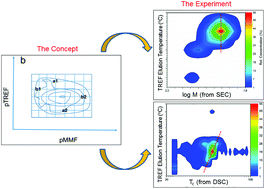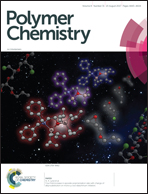Comprehensive analysis of branched polyethylene: the multiple preparative fractionation concept
Abstract
The branching distributions in low density polyethylene (LDPE) which originate from the radical polymerization processes can be expressed as short chain branching (SCB) and long chain branching (LCB). Since both molecular size and branching influence the physical properties of LDPE, structure–property correlations can be established only if these parameters are determined quantitatively. For the comprehensive analysis of branched polyethylene, we propose a multiple preparative fractionation approach. Using a representative low density polyethylene, we demonstrate how selective preparative fractionation provides fractions with different molar masses and branching architectures for offline analyses. More specifically, we show that preparative molar mass fractionation (pMMF) provides fractions with different molar masses but similar branching while preparative temperature rising elution fractionation (pTREF) can produce fractions with similar molar masses but different branching. These fractions (in mg quantities) can be analyzed consecutively by nuclear magnetic resonance, thermal analysis or micromechanics to yield selective and quantitative correlations between molecular size (molar mass), short chain and long chain branching.



 Please wait while we load your content...
Please wait while we load your content...